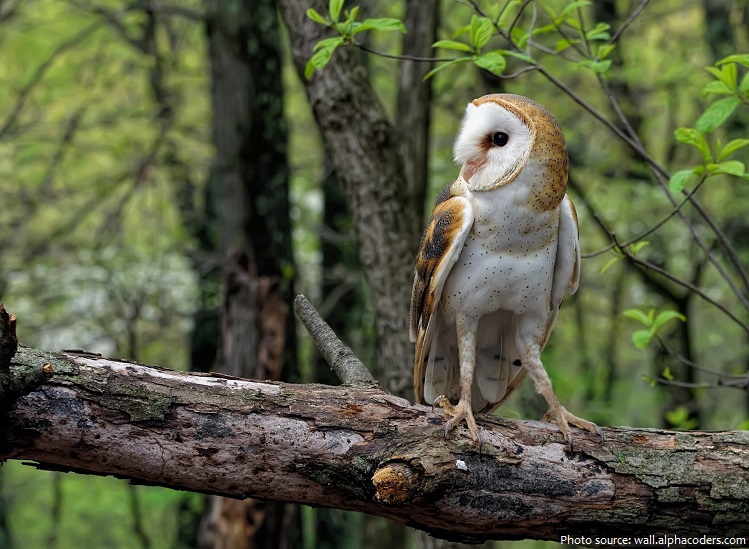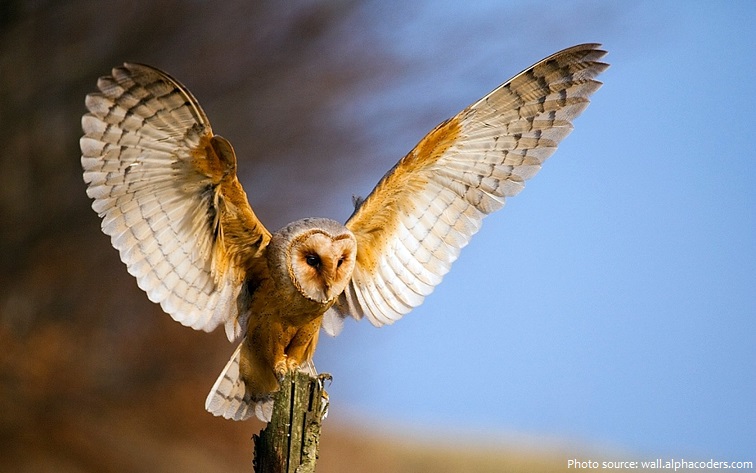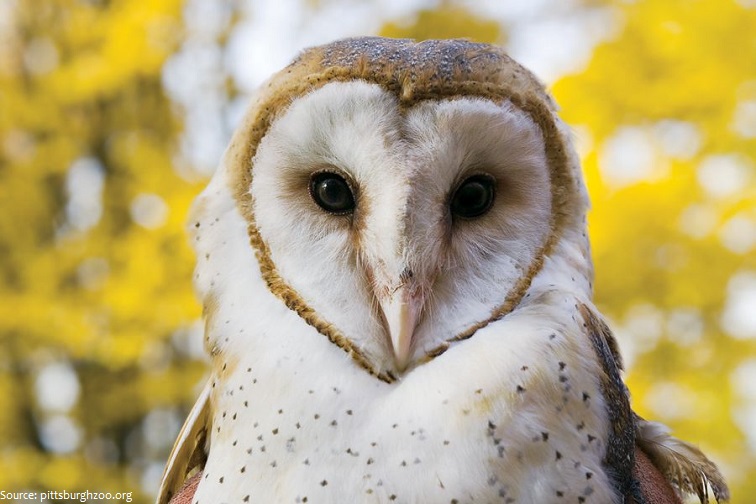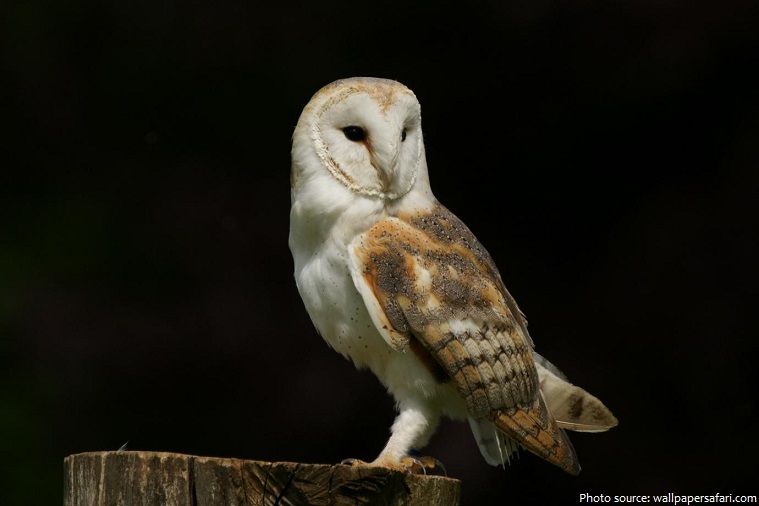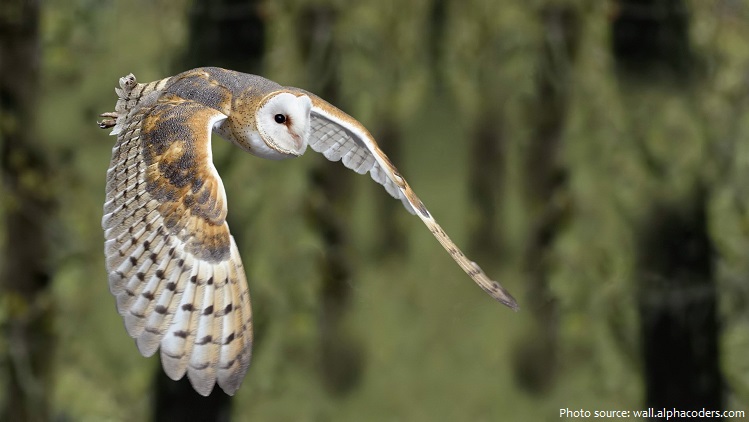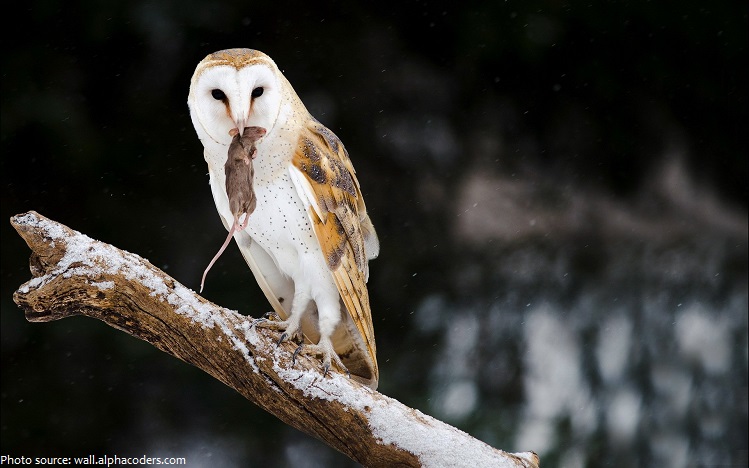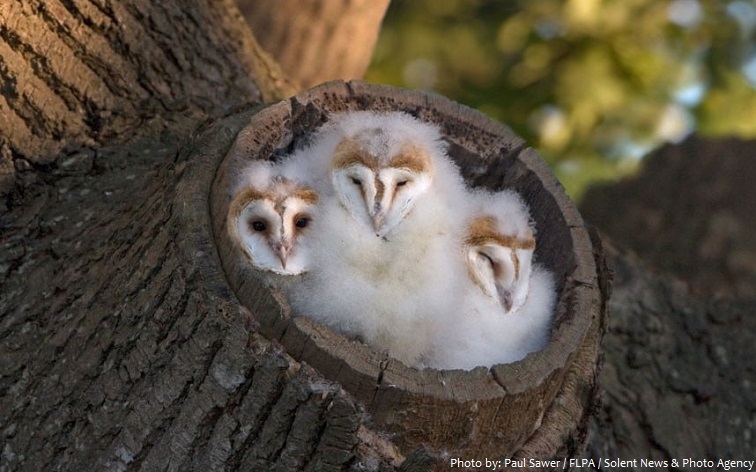The barn owl (Tyto alba), is a species of owl in the genus Tito.
It is the most widely distributed species of owl, and one of the most widespread of all birds.
It is also referred to as the common barn owl, to distinguish it from other species in its family, Tytonidae.
There is approximately 28 subspecies of barn owl.
The barn owl is found almost everywhere in the world except polar and desert regions, Asia north of the Himalayas, most of Indonesia, and some Pacific islands.
Barn Owls require large areas of open land over which to hunt. This can either be marsh, grasslands, or mixed agricultural fields.
A typical lifespan for a wild adult Barn Owl is 4 years. However, some individuals do live for many years. The oldest wild barn owl lived 34 years.
Barn owls are medium-sized owls with long legs that have feathers all the way down to their grey toes.
Females are larger than males.
There is considerable size variation across the subspecies with a typical specimen measuring about 33 to 39 cm (13 to 15 in) in overall length, with a full range of 29 to 44 cm (11 to 17 in) across the species.
Barn owls have a typical wingspan of some 80 to 95 cm (31 to 37 in), with a full range of 68 to 105 cm (27 to 41 in).
The full known weight range for the barn owl species can range from 224 to 710 g (7.9 to 25 oz).
The colors are light brown mixed in with dark brown. They also have white coloring around the front of them and some gray mixed into the body.
The pale face with its heart shape and black eyes give the flying bird a distinctive appearance, like a flat mask with oversized, oblique black eye-slits, the ridge of feathers above the beak somewhat resembling a nose.
Barn owls are solitary, or found in pairs.
Barn owls are non-territorial. Adults live in overlapping home ranges, each one covering from 300 to 5,000 hectares (740 to 12,350 acres).
They are nocturnal, and roost during the day in tree cavities, cliff crevices, riverbanks, barns, nest boxes, churches steeples, and other man-made structures.
Barn owls communicate with vocalizations and physical displays.
Surprisingly, barn owls do not make the hoot sound. It instead produces the characteristic shree scream, ear-shattering at close range, an eerie, long-drawn-out shriek.
They have excellent eyesight in near-darkness. When it is completely dark, owls use their excellent hearing to find prey.
Barn Owls have lop-sided ears! One is higher than the other, which helps them to pinpoint exactly where tiny sounds are coming from.
They have wings that are designed to offer them a silent flight ability. This makes it much easier for them to find their prey and to sneak up on them.
This bird can target its prey and dive to the ground, penetrating its talons through snow, grass or brush to seize small creatures with deadly accuracy.
Barn owls hunt small mammals such as mice, voles, shrews, rats, muskrats, hares and rabbits. They may also prey on small birds.
They use their bill to nip the prey through the back of the head to kill it, and then they swallow it whole – bits of fur and bone are then regurgitated (coughed up) as an owl pellet.
Barn owls save extra food to eat later, especially during the breeding season.
Barn owls are usually monogamous, sticking to one partner for life unless one of the pair dies.
Breeding takes place at varying times of year according to locality, with a clutch, averaging about four eggs, being laid in a nest in a hollow tree, old building or fissure in a cliff.
The female incubates the eggs for 29 to 34 days. The chicks are altricial, and must be brooded by the female for about 25 days after hatching. They leave the nest on their first flight 50 to 70 days after hatching, but they return to the nest to roost for 7 to 8 weeks. The chicks usually become independent from the parents 3 to 5 weeks after they begin flying.
When large numbers of small prey are readily available, barn owl populations can expand rapidly, and globally the bird is considered to be of least conservation concern. Some subspecies with restricted ranges are more threatened.
Predators of the barn owl include large American opossums, the raccoon, and similar carnivorous mammals, as well as eagles, larger hawks and other owls.
91% of barn owls post-mortemed were found to contain rat poison. Some owls die as a direct result of consuming rodenticides, but most contain sub-lethal doses. The effects of this remain unknown.
The bird is known by many common names which refer to its appearance, call, habitat, or its eerie, silent flight: white owl, silver owl, demon owl, ghost owl, death owl, night owl, rat owl, church owl, cave owl, stone owl, monkey-faced owl, hissing owl, hobgoblin or hobby owl, dobby owl, white-breasted owl, golden owl, scritch owl, screech owl, straw owl, barnyard owl, and delicate owl.
Barn owls are found usually at altitudes below 2,000 meters (6,600 feet) but occasionally as high as 3,000 meters (9,800 feet) in the tropics.
Feathers become abraded over time and all birds need to replace them at intervals. Barn owls are particularly dependent on their ability to fly quietly and manoeuvre efficiently, and in temperate areas their prolonged moult lasts through three phases over a period of two years.
Barn Owl feathers are super soft – this helps them to flight silently, but they are not very waterproof and get soaked if it rains.
On average a wild Barn Owl eats about 4 small mammals per night, that’s 1,460 per year.

